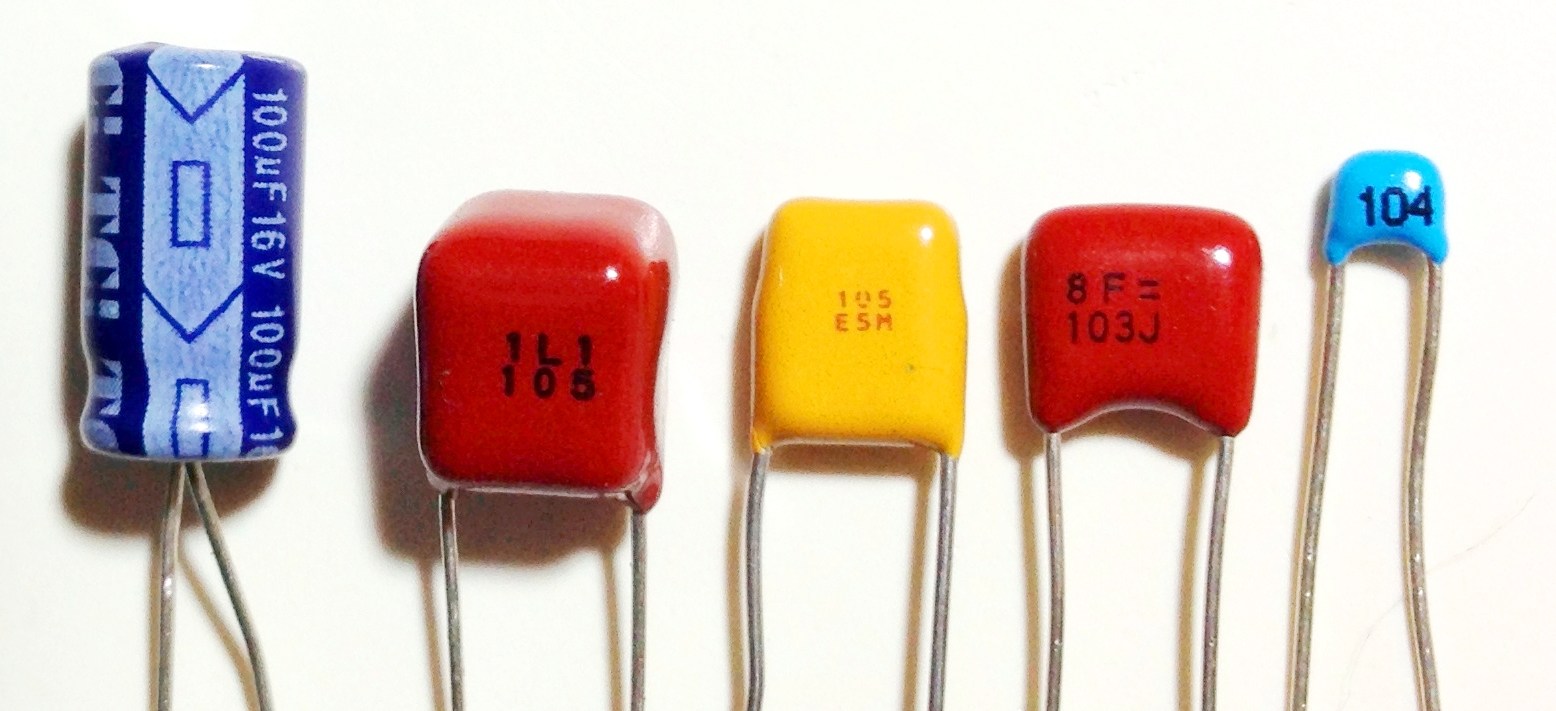What Exactly Is A Capacitor?

Lets start with a bit of interesting history first to understand where the ‘capacitor’ or condenser came from and how it was developed and then work our way up to our century.
 In 1745 a new physics and mathematics professor at the University of Leyden (spelled Leiden in modern Dutch), Pieter van Musschenbroek (1692-1791) and his assistants Allmand and Cunaeus from the Netherlands invented the ‘capacitor’ (electro-static charge or capacitance actually) but did not know it at first. His condenser was called the ‘Leyden Jar’ (pronounced: LY’duhn) and named so by Abbe Nollet. This Leyden jar consisted of a narrow-necked glass jar coated over part of its inner and outer surfaces with a conductive metallic substance; a conducting rod or wire passes through as insulating stopper (cork) in the neck of the jar and contacts the inner foil layer, which is separated from the outer layer by the glass wall. The Leyden jar was one of the first devices used to store an electric charge. If the inner layers of foil and outer layers of foil are then connected by a conductor, their opposite charges will cause a spark that discharges the jar. Actually, van Musschenbroek’s very first ‘condenser’ was nothing more than a beer glass!
In 1745 a new physics and mathematics professor at the University of Leyden (spelled Leiden in modern Dutch), Pieter van Musschenbroek (1692-1791) and his assistants Allmand and Cunaeus from the Netherlands invented the ‘capacitor’ (electro-static charge or capacitance actually) but did not know it at first. His condenser was called the ‘Leyden Jar’ (pronounced: LY’duhn) and named so by Abbe Nollet. This Leyden jar consisted of a narrow-necked glass jar coated over part of its inner and outer surfaces with a conductive metallic substance; a conducting rod or wire passes through as insulating stopper (cork) in the neck of the jar and contacts the inner foil layer, which is separated from the outer layer by the glass wall. The Leyden jar was one of the first devices used to store an electric charge. If the inner layers of foil and outer layers of foil are then connected by a conductor, their opposite charges will cause a spark that discharges the jar. Actually, van Musschenbroek’s very first ‘condenser’ was nothing more than a beer glass!
By modern standards, the Leyden jar is cumbersome and inefficient. It is rarely used except in exciting laboratory demonstrations of capacitance, and exiting they are! Benjamin Franklin was acquainted with the Leyden Jar experiments also so he decided to test his ideas that ‘charge’ could also be caused by thunder and lightning. Franklin tested his theories, in Philadelphia in June 1752, via his now famous ‘Electrical Fluid Theory’ to prove that lightning was an electrical phenomenon. What he did was fly a kite which had a metal tip. The kite was tied with wet conducting thin hemp cord and at the end he attached a metal key to which a non-conducting silk string was attached which he held in his hand; when he held his knuckles near the key he could draw sparks from it. Although his experiment was completed successfully and the results as he had calculated before, the next couple people after him who tried the hazardous experiment were killed by lightning strikes. I guess Franklin was extremely lucky with his hazardous experiments. I myself believe in some sort of “time-line” in which inventions are invented ‘no matter what’.
A similar device was invented independently by Ewald Georg von Kleist, Dean of the Kamin Cathedral in Pomerania, at about the same time (October 1745), but these facts were not published immediately at that particular time. As a matter of fact, van Musschebroek announced his discovery in January, 1746. However, a letter dated February 4, 1745 appearing in Philosophical Transactions suggests that the jar existed in van Musschenbroek’s laboratory almost a year before that date. There is still some residual controversy about this but the generally held opinion is: “Trembley, the editor, or the composer of the letter in PT either misdated the letter, or failed to translate properly into the new style (NS). Until 1752 the English began their legal year on March 25 so that, roughly speaking, their dates where a year behind continental ones for the first quarter of every continental year. This makes sense because there would be no reason for van Musschenbroek and his staff to delay announcing for 11 months, especial given the potential claim to prior discovery by Von Kleist.





